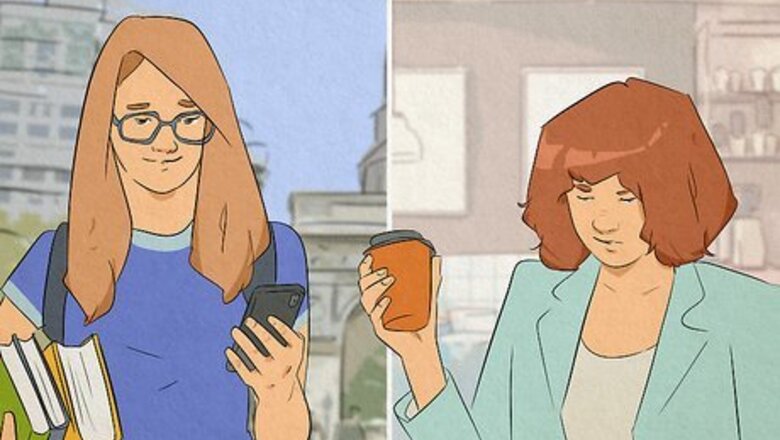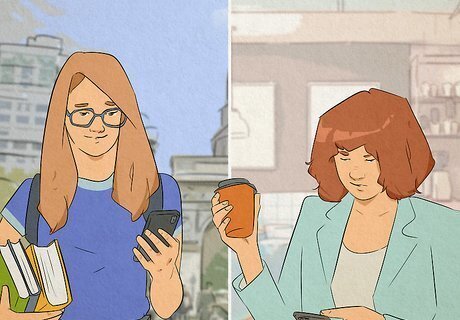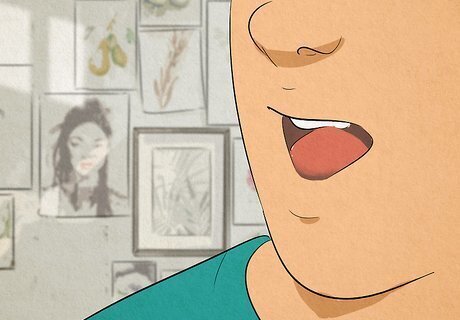
views
- RBF stands for “resting b*tch face.” It’s refers to an unamused, annoyed, or disdainful resting facial expression.
- Some research indicates that RBF is real. People sometimes detect contempt in others’ resting facial expressions, even when the person isn't feeling contempt.
- To combat RBF, relax your facial muscles, pay attention to nervous habits that affect your expression, and work on conveying your feelings verbally.
What does RBF mean?

“RBF” stands for “resting b*tch face.” This popular term generally means that someone has an unamused, annoyed, or unhappy resting facial expression. It’s important to note, however, that RBF doesn’t indicate someone’s true emotions—they're likely feeling perfectly fine. People with RBF report that their discontented facial expression doesn’t line up with how they’re actually feeling. Here’s some examples of how the term RBF might be used in a conversation: j “I’m worried I didn’t make a good impression at the job interview. I feel like I had RBF—I didn’t remember changing up my facial expression, and I think I might have looked bored or annoyed, even though I wasn’t.” I saw a picture of myself from the party last night and it looks like I had RBF. I was having such a good time, but my facial expression looks totally uninterested and unhappy!”
Is RBF real?

According to some research, RBF is real. In 2016, researchers studied RBF using software that picks up on micro-emotions in people’s facial expressions. When studying people’s neutral expressions, the software picked up on “contempt” in the faces that were identified as having RBF. This means that people who have RBF tend to show contempt in their neutral, resting facial expression, even when they aren’t feeling this emotion. It’s important to note, however, that "RBF" has been largely used as a derogatory term to describe women. This could be due to unfair social norms and biases about gender. Women may be expected to “put on a smile” in social situations, whereas it's more acceptable for men to wear blank expressions. Take, for instance, a famous interaction between Olympic gymnast Simone Biles and the host of Dancing With the Stars. When Biles was dissatisfied with her scores, the host said he was surprised she didn’t smile at the compliments she received. Simone replied, “Smiling doesn’t win you gold medals.” Though RBF is a term that’s predominantly used to describe women, the facial reading software picked up on RBF equally between the men and women in the study. In other words, both men and women suffer from RBF equally, so the exaggerated use of the term on women likely has to do with unfair bias.
What does RBF look like?

RBF is a discontented, annoyed, or bored resting facial expression. Specifically, subtle signals like curling your lip back slightly or squinting your eyes can produce this effect. Words used to describe the appearance of RBF include angry, annoyed, and irritated, as well as blank and expressionless. Often, RBF simply refers to a bored or distracted facial expression that you might naturally fall into if you’re deep in contemplation or thinking about something else, rather than being present in a social setting.
How to Prevent RBF

Relax your facial muscles. People make judgments based on facial cues (they see friendly-looking faces as more trustworthy, for example). RBF involves tightening the muscles around your eyes or lips, and you can change these automatic actions through practice. Get into the habit of relaxing your facial muscles throughout the day. If you feel yourself furrowing your brow or tightening the muscles around your mouth, remind yourself to release the tension. Gently move your jaw forwards and backwards, and relax the muscles around your eyes. If you think you have RBF, you might be worried about your expression conveying emotions you aren’t actually feeling. This might make you want to work on it. That said, the decision to work on this is entirely up to you. If you naturally have a more somber resting expression and are comfortable with that, that’s absolutely okay, and you don’t need to change anything!

Work on being a good listener. RBF is commonly described as a “bored” or “disinterested” expression. This could offend people in social settings, especially if they feel like you aren’t listening to them or paying attention to what they have to say. Work on your active listening skills to show that you’re paying attention. Here are some tips: Make eye contact and face the other person while you’re talking. Nod to acknowledge that you’ve heard what they said, and make statements that show you’re listening, such as “Wow, what happened next?” React with your facial expressions. For example, if they tell you something shocking, you might wear a surprised expression. If they tell you good news, you could show excitement with a smile.

Pay attention to any nervous habits that may affect your expression. Some people believe that their RBF is a result of social anxiety. If you’re feeling extra nervous in a social situation, you might tighten your facial muscles or furrow your brow, and others might incorrectly interpret this as RBF. Try to pay more attention to the expressions you make when you’re feeling anxious. If you notice your facial muscles becoming tense, remind yourself to relax these muscles. Here are a few more tips to combat social anxiety: Practice mindfulness. This involves focusing on what you’re feeling in the present, which can help you stay in the moment in social situations, rather than getting stuck up in your head. Don’t be afraid to rely on your support system. You don’t have to go it alone! Let your loved ones know what you’re going through, so they can offer their support. Try seeing a therapist or a counselor. It can be tough to deal with social anxiety on your own, and a professional can provide some helpful tools to address your symptoms. Ask a trusted friend or family member for a referral if they work with a therapist, or check online directories to find a therapist.

Communicate your emotions verbally. RBF is essentially a misinterpretation—you’re wearing your neutral, resting expression, but others perceive it to be an expression of disdain, contempt, or boredom. If you find it difficult to change your natural resting expression, try communicating your thoughts and expressions verbally more often than you typically would. This can show others that you’re not actually feeling the negative emotions they’re assuming from your facial expression. If you’re enjoying yourself at a gathering but feel like your expression might be blank, you could say, “I’m having a great time!” out loud to let others know how you’re feeling. Or, if you’re feeling distracted or stressed (but not angry), you could give the people around you a heads up: “Hey everyone, I’m kind of up in my head today. If I look off, it doesn’t have to do with you, it’s just that I’m stressed!”
















Comments
0 comment